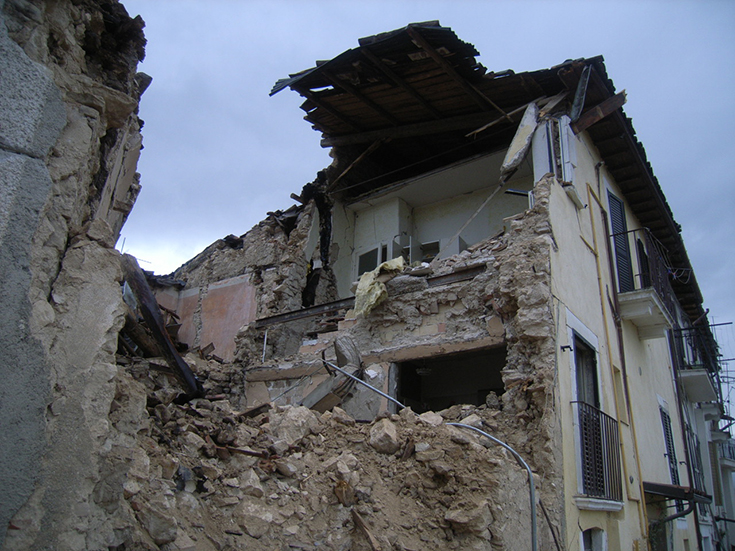Better communication is key to cutting earthquake death toll, say experts
Communicating earthquake risk has long been a major challenge for scientists, yet the right messages at the right time can and will save lives, say US Communication scholars in an article published in the Journal of Applied Communication Research. The authors stress that more should be done to ensure that members of the public receives clear, timely information on risk, and on what actions they should take to protect themselves.

European co-operation in disaster management during the devastating earthquake in the Aquila province of Italy. The Italian authorities requested a small team of European experts to assist in assessing the stability of buildings. Through the Monitoring and Information Centre (MIC) of the European Commission, eight experts were sent to Italy, accompanied by a MIC liaison officer (Photo: European Commission)
A major problem is that scientists are unable to predict when, where, and with what strength the next earthquake will strike. Instead, they use 'probabilistic forecasting' based on seismic clustering. Earthquake experts have long grappled with the problem of how to convey these complex probabilities to lay persons.
The tragic Italian 2009 L'Aquila earthquake highlighted the difficult task facing scientists when communicating risk and uncertainty. Poor risk communication about the tremors that preceded the deadly quake led to widespread misunderstanding and confusion among the general public. The consequences were devastating. This crystallised the need for operational earthquake forecasting (OEF) scientists to change what and how they communicate with one another and the public.
In this study, US researchers, led by Deanna Sellnow, a Communication Professor from the University of Central Florida, examined the impact of the L'Aquila earthquake on the international scientific earthquake community of practice (CoP). Key tasks included a review of the failed communication crisis and a detailed analysis of an OEF decision-making workshop held in June 2014.
The findings showed a significant shift in the earthquake scientists' approach to communication. They transformed their goal from being focused solely on probabilistic modelling to actively forming strong partnerships with a diverse range of experts, including risk communication experts.
By involving a range of interdisciplinary partners, the OEF CoP developed a clear, evidence-based, practical approach to improve risk communication and protect public safety during earthquakes and other natural disasters. Key recommendations include:
-
Engaging with decision-makers and the public to gain their support and educate them about earthquake forecasting (including its benefits and limitations);
-
Developing simple and precise public warning messages that are less likely to be misunderstood, and ensuring message alerts are timely and delivered through multiple communication sources and channels; and
-
Minimising the potential negative impact of inaccurate and misleading messages by issuing corrections or clarifications promptly.
To read the full article please email here